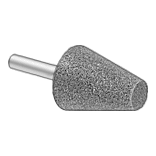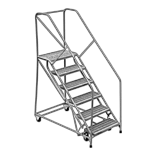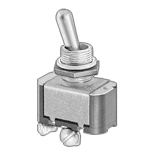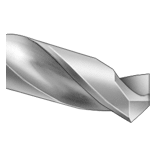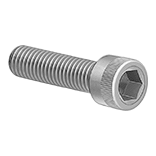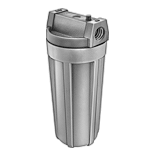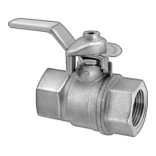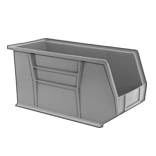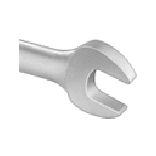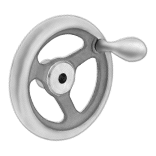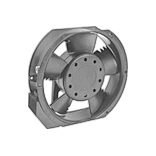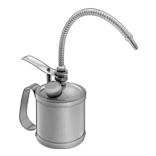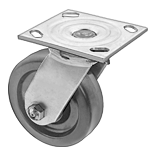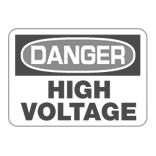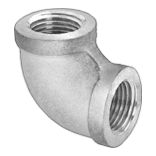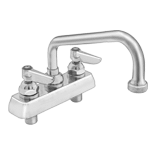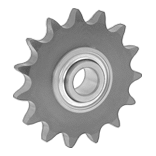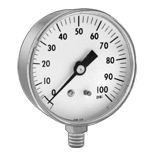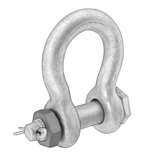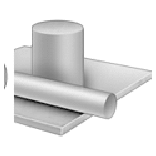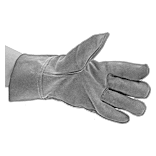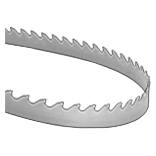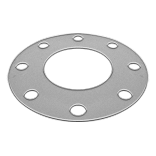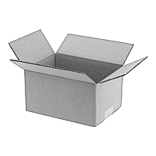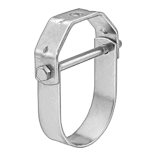About Heat-Shrink Tubing
More
Chemical-Resistant Heat-Shrink Tubing

Use this tubing where wire and cable may be exposed to chemicals, oil, and acids.
Neoprene rubber tubing is abrasion resistant. Viton® fluoroelastomer rubber tubing is more chemical resistant than neoprene rubber. It’s also abrasion resistant and withstands temperatures up to 390° F.
SAE AMS-DTL-23053/1 Class 2, 23053/2 Class 2, and 23053/13 tubing meets requirements for material quality and color.
Dielectric strength is the maximum voltage a material can handle before it starts to breakdown. The higher the dielectric strength of a material, the better it is for preventing electricity, heat, or signal from dissipating from wire and cable.
- Shrink Ratio: 2:1
- Dielectric Strength: 800 V/mil
- Shrink Temperature: 275° F
- Temperature Range: -90° to 250° F
- Specifications Met: SAE AMS-DTL-23053/1 Class 2
- Shrink Ratio: 2:1
- Dielectric Strength: 200 V/mil
- Shrink Temperature: 350° F
- Temperature Range: -65° to 390° F
- Specifications Met: SAE AMS-DTL-23053/13
ID | 1/2 ft. Lg. | ||||
|---|---|---|---|---|---|
| Before Shrinking | Min. After Shrinking | Min. Wall Thick. After Shrinking | Color | Each | |
| 0.19" | 0.11" | 0.04" | Black | 0000000 | 00000 |
| 0.25" | 0.13" | 0.04" | Black | 0000000 | 0000 |
| 0.38" | 0.19" | 0.04" | Black | 0000000 | 0000 |
| 0.5" | 0.25" | 0.04" | Black | 0000000 | 0000 |
| 0.63" | 0.31" | 0.04" | Black | 0000000 | 0000 |
| 0.75" | 0.38" | 0.04" | Black | 0000000 | 0000 |
| 1" | 0.5" | 0.05" | Black | 0000000 | 0000 |
Fuel-Resistant Heat-Shrink Tubing

- Material: Polyester/Rubber Blend
- Shrink Ratio: 2:1
- Dielectric Strength: 300 V/mil
- Shrink Temperature: 350° F
- Temperature Range: -100° to 300° F
- Specifications Met: SAE AMS-DTL-23053/16
Resistant to diesel fuel, gasoline, hydraulic fluid, and lubricating oil, this polyester/rubber blend tubing is often used in vehicles. It meets SAE AMS-DTL-23053/16 for material quality.
Dielectric strength is the maximum voltage a material can handle before it starts to breakdown.
ID | 1/2 ft. Lg. | 4 ft. Lg. | |||||
|---|---|---|---|---|---|---|---|
| Before Shrinking | Min. After Shrinking | Min. Wall Thick. After Shrinking | Color | Each | Each | ||
| 0.13" | 0.06" | 0.03" | Black | 0000000 | 00000 | 0000000 | 000000 |
| 0.19" | 0.09" | 0.03" | Black | 0000000 | 0000 | 0000000 | 00000 |
| 0.25" | 0.13" | 0.04" | Black | 0000000 | 0000 | 0000000 | 00000 |
| 0.38" | 0.19" | 0.04" | Black | 0000000 | 0000 | 0000000 | 00000 |
| 0.5" | 0.25" | 0.05" | Black | 0000000 | 0000 | 0000000 | 00000 |
| 0.75" | 0.38" | 0.06" | Black | 0000000 | 0000 | 0000000 | 00000 |
| 1" | 0.5" | 0.07" | Black | 0000000 | 00000 | 0000000 | 00000 |
| 1.5" | 0.75" | 0.1" | Black | 0000000 | 00000 | 0000000 | 000000 |
Continuous-Flex Abrasion-Resistant Heat-Shrink Tubing

- Material: Silicone Rubber
- Shrink Ratio: 1.7:1
- Dielectric Strength: 200 V/mil
- Shrink Temperature: 275° F
- Temperature Range: -55° to 390° F
- Specifications Met: UL 2556 VW-1
Often used in automated applications such as robotics, this highly flexible tubing withstands continuous motion without cracking and tearing. Made of silicone rubber, it resists abrasion and chemicals, and withstands temperatures up to 390° F. Its flame rated VW-1 to meet requirements for preventing the spread of flames based on a timed test with vertically suspended material.
Dielectric strength is the maximum voltage a material can handle before it starts to breakdown.
ID | 1 ft. Lg. | 2 ft. Lg. | 5 ft. Lg. | ||||||
|---|---|---|---|---|---|---|---|---|---|
| Before Shrinking | Min. After Shrinking | Min. Wall Thick. After Shrinking | Color | Each | Each | Each | |||
| 0.12" | 0.07" | 0.06" | Gray | 0000000 | 000000 | 0000000 | 000000 | 0000000 | 0000000 |
| 0.2" | 0.11" | 0.06" | Gray | 0000000 | 00000 | 0000000 | 00000 | 0000000 | 000000 |
| 0.31" | 0.17" | 0.06" | Gray | 0000000 | 00000 | 0000000 | 000000 | 0000000 | 000000 |
| 0.39" | 0.24" | 0.06" | Gray | 0000000 | 00000 | 0000000 | 000000 | 000000 | 00 |
| 0.59" | 0.35" | 0.06" | Gray | 0000000 | 00000 | 0000000 | 000000 | 000000 | 00 |
Harsh Environment Heat-Shrink Tubing Assortments
Maintain a supply of tubing in a variety of sizes and materials that withstands harsh conditions such as abrasion, moisture, and chemicals.
Polyester/rubber tubing is chemical resistant.
Neoprene rubber tubing resists chemicals, oil, and acids.
Viton® fluoroelastomer rubber tubing resists chemicals, oil, acids, and abrasion.

| Includes | Number of Pieces | Lg. | Shrink Ratio | Shrink Temp., °F | Features | Color | Each | |
| 0.19-0.75" ID Before Shrinking of Polyester/Rubber Blend (5 pieces, 5 sizes) 0.19-0.75" ID Before Shrinking of Neoprene (5 pieces, 5 sizes) 0.19-0.75" ID Before Shrinking of Viton® Fluroelastomer Rubber (5 pieces, 5 sizes) | 15 | 2" | 2:1 | 250° to 350° | Chemical Resistant | Black | 00000000 | 000000 |
No-Heat Shrink Tubing

Create a permanent seal without applying heat. Also known as cold-shrink tubing, this tubing has a removable spiral-wound core. Slide the tubing over wire and cable and pull out the core. When the core is removed, the tubing contracts and conforms to the underlying cable. The length shrinks by several inches. Made of rubber, it resists chemicals including acids, alkalies, and ozone. Resistant to UV, it won’t fade or discolor when exposed to sunlight.
EPDM rubber tubing resists tearing and abrasion better than silicone rubber tubing, making it more durable. It meets ANSI C119.1 for water seal requirements and can be submerged.
Silicone rubber tubing withstands a wider temperature range without degrading than EPDM rubber tubing. It is also more flexible for use in tight spaces.
Dielectric strength is the maximum voltage a material can handle before it starts to breakdown.
- Shrink Ratio: 2:1
- Dielectric Strength: 365 V/mil
- Temperature Range: -40° to 190° F
- Specifications Met: ANSI C119.1
ID | Lg. | |||||||
|---|---|---|---|---|---|---|---|---|
| Before Shrinking | Min. After Shrinking | Flexibility | Before Shrinking | Max. Covered | For Max. Voltage | Color | Each | |
| 0.55" | 0.31" | Flexible | 6" | 2" | 1,000V AC | Black | 00000000 | 000000 |
| 0.66" | 0.19" | Flexible | 6" | 2" | 1,000V AC | Black | 00000000 | 00000 |
| 0.82" | 0.1" | Flexible | 8" | 3" | 1,000V AC | Black | 0000000 | 00000 |
| 0.94" | 0.4" | Flexible | 8" | 3" | 1,000V AC | Black | 0000000 | 00000 |
| 1.18" | 0.55" | Flexible | 9" | 5" | 1,000V AC | Black | 0000000 | 00000 |
| 1.18" | 0.55" | Flexible | 11" | 7" | 1,000V AC | Black | 0000000 | 00000 |
| 1.38" | 0.67" | Flexible | 6" | 2" | 1,000V AC | Black | 0000000 | 00000 |
| 1.38" | 0.67" | Flexible | 12" | 8" | 1,000V AC | Black | 0000000 | 00000 |
| 1.38" | 0.67" | Flexible | 16" | 12" | 1,000V AC | Black | 0000000 | 00000 |
| 1.94" | 0.95" | Flexible | 6" | 2" | 1,000V AC | Black | 0000000 | 00000 |
| 1.94" | 0.95" | Flexible | 12" | 8" | 1,000V AC | Black | 0000000 | 00000 |
| 1.94" | 0.95" | Flexible | 18" | 14" | 1,000V AC | Black | 0000000 | 00000 |
| 2.67" | 1.27" | Flexible | 6" | 2" | 1,000V AC | Black | 0000000 | 00000 |
| 2.67" | 1.27" | Flexible | 9" | 5" | 1,000V AC | Black | 0000000 | 00000 |
| 2.67" | 1.27" | Flexible | 18" | 14" | 1,000V AC | Black | 0000000 | 000000 |
Moisture-Seal Wrap for Heat-Shrink Tubing
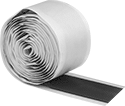
Use this wrap with heat-shrink tubing to create a moisture-resistant seal. Apply it like tape around wire and cable, and slide the tubing over the wrap. The wrap melts when tubing is heated and bonds to the underlying surface.
TPE rubber wrap has a higher dielectric strength than nylon plastic and butyl rubber wrap, so it’s the best choice for electrical insulation.
Butyl rubber wrap seals larger gaps than TPE rubber and nylon plastic wrap, so it’s better for protecting irregular shapes or items with deep grooves. However, it doesn’t withstand temperatures as high.
Dielectric strength is the maximum voltage a material can handle before it starts to breakdown. The higher the dielectric strength of a material, the better it is for preventing electricity, heat, or signal from dissipating from wire and cable.
No-Heat Shrink End Caps

- Material: EPDM Rubber
- Shrink Ratio: See Table
- Temperature Range: -40° to 220° F
With a spiral-wound core, these end caps form a permanent seal on the end of your crimped wire or cable without heat or tools. Slide them on, pull out the core, and they conform to the end of your connection, creating a seal that insulates and protects against water, dust, and abrasion. You may also know them as cold-shrink tubing end caps. They’re sometimes even used to seal the ends of pipes and wire rope.
Made of EPDM, these caps won’t become brittle from ozone or chemicals such as acids and alkalies. They also won’t fade in the sun.
ID | ||||||||
|---|---|---|---|---|---|---|---|---|
| Before Shrinking | Min. After Shrinking | Min. Wall Thick. After Shrinking | Min. Lg. After Shrinking | Shrink Ratio | Color | Specifications Met | Each | |
| 0.82" | 0.46" | 0.18" | 2.38" | 2:1 | Black | ANSI C119.1 | 0000000 | 000000 |
| 1.12" | 0.63" | 0.18" | 2.84" | 2:1 | Black | ANSI C119.1 | 0000000 | 00000 |
| 1.94" | 1.02" | 0.14" | 3.24" | 2:1 | Black | ANSI C119.1 | 0000000 | 00000 |
| 3.32" | 1.79" | 0.14" | 3.95" | 2:1 | Black | ANSI C119.1 | 0000000 | 00000 |
